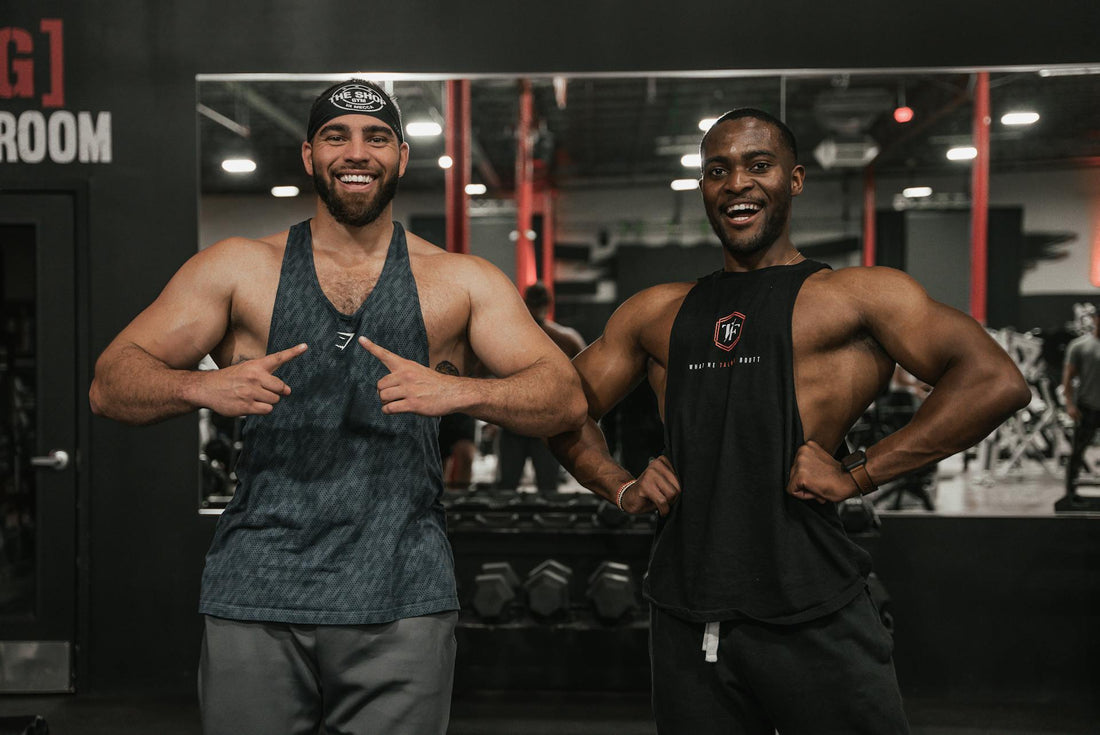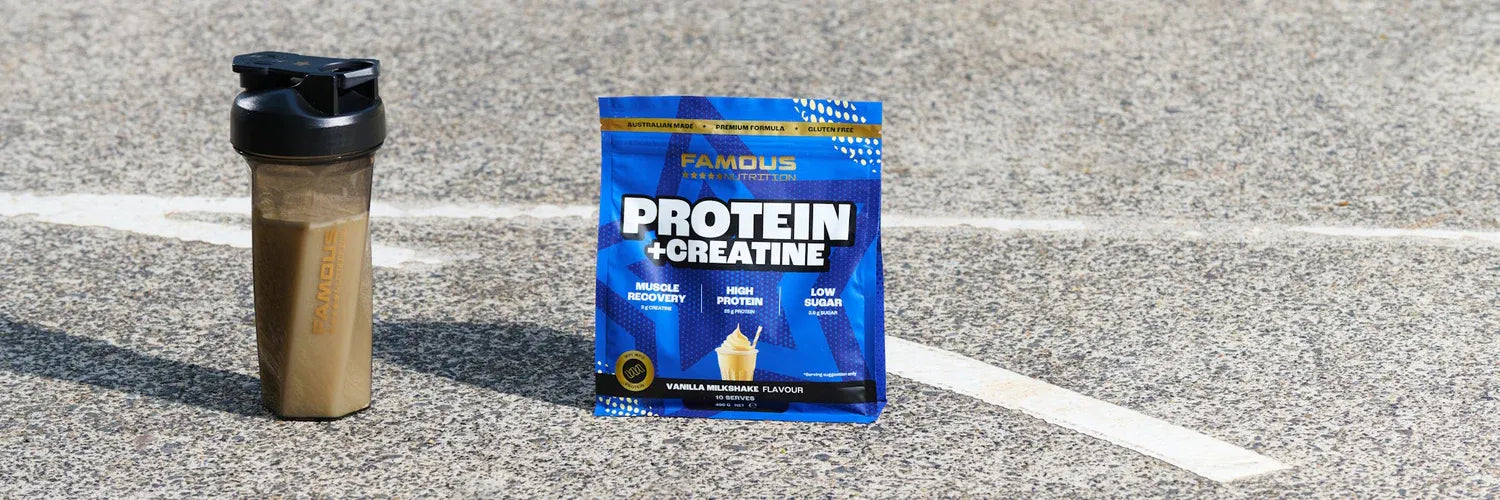
How to Build Muscle Mass Fast
By: Marc ManzoniShare
Are you looking to pack on some serious muscle? No matter where you are on your fitness journey, learning how to build muscle fast is a pretty common goal. In this guide, we'll explore effective strategies to help you build muscle mass quickly and efficiently. We'll cover everything from proper nutrition and workout techniques to recovery methods.
Understanding Muscle Growth
Before unpacking the strategies for building muscle fast, it's essential to understand the basics of muscle growth. Muscle hypertrophy, or muscle growth, occurs when muscle fibres are damaged through weight training and then repaired and grown back stronger. This process requires adequate protein synthesis, proper nutrition, and sufficient recovery time.
Nutrition: The Foundation of Muscle Building
Proper nutrition is one of the most critical factors in building muscle fast. Your body needs the right fuel to grow and repair muscle tissue.
Caloric Surplus
To build muscle effectively, consuming more calories than you burn is essential. For beginners, aim for a caloric surplus of around 10% to 20%, which typically translates to increasing your body weight by 0.25% to 0.5% each week. This ensures your body has the extra energy needed to build new muscle tissue. Advanced bodybuilders, however, may need to approach their caloric surplus more cautiously, as excessive calorie intake can lead to unwanted fat gain. Adjust your intake based on your progress and individual needs to optimise muscle growth without compromising your results.
Protein Intake
Dietary protein is crucial for muscle growth. As a rule of thumb, aim for 1.6-2.2 grams of protein per kilogram of body weight daily. Include a variety of muscle-building foods in your diet, such as:
- Lean meats (chicken, turkey, lean beef)
- Fish (salmon, tuna, snapper)
- Eggs
- Greek yoghurt
- Cottage cheese
- Legumes and beans
- Quinoa
- Nuts and seeds
Carbohydrates and Fats
Don't neglect carbohydrates and healthy fats. Carbs provide energy for your workouts and help with recovery, while fats support hormone production, including testosterone, which is crucial for muscle growth. Aim for a balanced diet that includes complex carbohydrates like sweet potatoes, whole grains, and vegetables, as well as healthy fats from sources like avocados, nuts, and olive oil.

Creatine
Ever heard of creatine? It's one of the most popular and researched supplements for building muscle. Creatine supplements work by increasing the availability of energy in your muscles, allowing you to perform better during intense workouts.
By improving strength, power, and overall workout performance, creatine can help promote faster muscle growth when combined with a proper training routine. Found naturally in foods like red meat and fish, creatine supplementation is a convenient way to boost your muscle-building potential. Studies also show that it can support recovery and reduce muscle fatigue, making it a valuable addition to your fitness regimen.
Effective Workout Strategies
Now that we've covered nutrition let's discuss workout strategies to help you build muscle fast.
Progressive Overload
To continually build muscle, you need to progressively increase the demands on your muscles. This can be done by:
- Increasing the weight you lift
- Increasing the number of reps
- Increasing the number of sets
- Decreasing rest time between sets
Progressive overload is crucial for continued muscle growth. Your body adapts to the stress you put on it, so you need to consistently challenge your muscles to stimulate growth.
Compound Exercises
Focus on compound exercises that work multiple muscle groups simultaneously. This type of exercise is more efficient for building overall muscle mass. Key compound exercises include:
- Squats
- Deadlifts
- Bench presses
- Lunges
- Pull-ups
- Overhead presses
Compound exercises not only help you build muscle faster but also improve overall strength and functional fitness.

Strength Training Frequency
Aim to train each muscle group 2-3 times per week. This frequency allows for optimal muscle protein synthesis and recovery. A common split might look like:
- Monday: Upper body
- Tuesday: Lower body
- Wednesday: Rest
- Thursday: Upper body
- Friday: Lower body
- Saturday: Rest
- Sunday: Full body or rest
Muscle Recovery and Rest
While it might seem counterintuitive, rest is crucial for muscle growth. Aim for 7-9 hours of sleep per night and allow at least one full rest day per week. During sleep and rest periods, your body repairs and builds muscle tissue.
How Long Does It Take to Build Muscle?
One of the most common questions when it comes to muscle building is, "How long does it take to build muscle?" The answer varies depending on several factors, including:
- Genetics
- Age
- Gender
- Training experience
- Diet
- Sleep quality
- Stress levels
On average, the average person can expect to gain 1-2 pounds of muscle per month. Remember, these are averages, and individual results may vary. Consistency is key to seeing results.
How to Build Muscle Fast and Lose Fat
Many people wonder if it's possible to build muscle and lose fat simultaneously. While it's challenging, it is possible, especially for beginners or those returning to training after a long break. Here are some strategies:
- Keep protein intake high
- Engage in resistance training 3-4 times per week
- Incorporate high-intensity interval training (HIIT) for fat loss
- Get adequate sleep and manage stress
This approach, often called body recomposition, requires careful attention to diet and training but can yield impressive results.

Does Muscle Weigh More Than Fat?
A common misconception is that muscle weighs more than fat. In reality, a kilo of muscle weighs the same as a kilo of fat — they both weigh a kilo! However, muscle is denser than fat, meaning it takes up less space in your body. This is why as you build muscle and lose fat, you might notice changes in your body composition and how your clothes fit, even if the number on the scale doesn't change much.
Signs of Gaining Muscle and Losing Fat
As you progress on your muscle-building journey, you might wonder how to tell if you're gaining muscle and losing fat. Here are some signs to look out for:
- Your clothes fit differently: You might notice your shirts feeling tighter around your chest and arms, while your waist feels looser.
- You're getting stronger: If you're consistently able to lift heavier weights or do more reps, it's a good sign you're building muscle.
- Your body measurements are changing: Use a tape measure to track changes in your arms, chest, waist, and thighs.
- Your body fat percentage is decreasing: If you have access to body fat measurement tools, you might see your body fat percentage decrease even as your weight stays the same or increases slightly.
- You have more energy: As you build muscle and lose fat, you might notice increased energy levels throughout the day.
- Your metabolism increases: Muscle tissue burns more calories at rest than fat tissue, so you might notice you can eat more without gaining fat.
Advanced Techniques for Muscle Building
Once you've mastered the basics, you might want to try some advanced techniques to further accelerate your muscle growth:
Drop Sets
After reaching muscle failure with a certain weight, immediately reduce the weight and continue performing reps until failure again. This technique can help push your muscles to their limits and stimulate growth.
Supersets
Pair two exercises for the same muscle group and perform them back-to-back without rest. This increases the intensity of your workout routine and can lead to greater muscle gain.
Trisets
Perform three exercises for the same muscle group back-to-back with little to no rest. This technique significantly increases training intensity and can lead to greater gains in muscle endurance.
Giant Sets
A giant set involves performing four exercises back-to-back with little to no rest between them. This technique can be used to target a single muscle group or work antagonistic muscle groups alternatively.

Smash Your Muscle-Building Goals
Building muscle fast requires a combination of proper nutrition, effective workouts, adequate rest, and consistency. Remember, everyone's journey is different, and what works for one person might not work for another.
Be patient with your progress and focus on making sustainable lifestyle changes rather than looking for quick fixes. By following the strategies outlined in this article, you'll be well on your way to building muscle mass efficiently. Remember to listen to your body, adjust your approach as needed, and celebrate your progress along the way.
Whether you're aiming to build muscle fast, lose fat, or improve your overall fitness, these strategies will help you reach your goals.
Keep pushing, stay consistent, and watch your hard work pay off!



